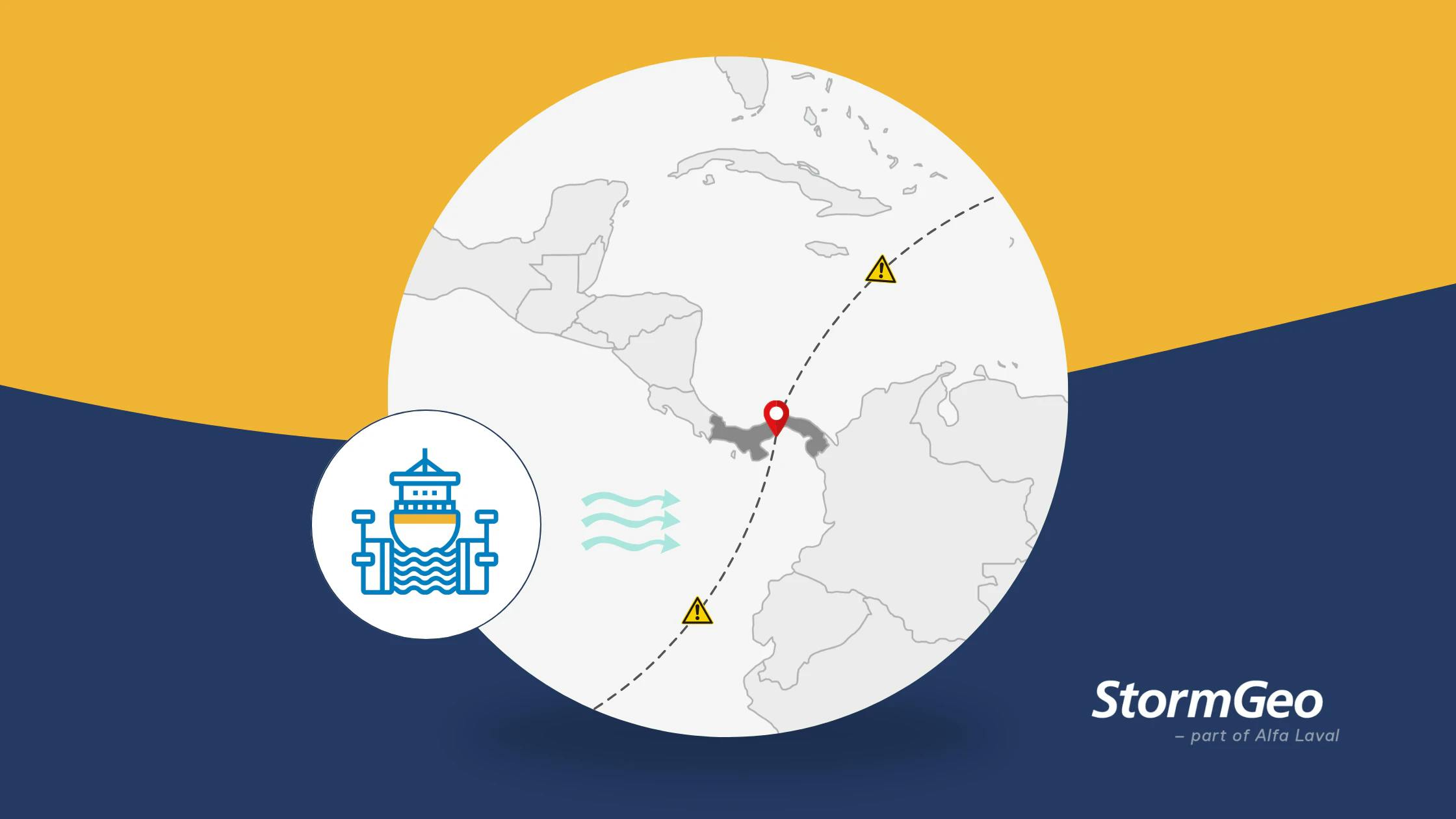Contact us
Reach out to us and a representative from one of our 26 worldwide office locations will contact you shortly.
Please login to your designated client portal:
Article - September 26, 2023

As El Nino is forecasted to get more intense in the coming months, the situation is likely to bring up even more challenges for shipping, increasing the need for accurate data in voyage planning and execution.
According to media reports, ACP has predicted that vessel transits through the canal for the upcoming fiscal year will be reduced by at least 1,500 due to the ongoing drought conditions. In response, the ACP has applied restrictions on daily vessel transits, including an upper limit of 32 transits per day and a draught limit of 13.41 meters in the neopanamax locks.
According to the StormGeo Meteorologists Team in the US, the ongoing severe drought in Panama is likely due to the developing El Nino event, which normally causes well below normal rainfall across Central America. Since the El Nino event is forecast to strengthen over the next few months, we would expect the ongoing-drier-than-normal conditions to continue through the rest of the year. Looking at some of the longer-range models, most agree in below-normal rainfall across Panama through December.
Consequently, with restrictions possibly staying in effect for at least four extra months, the challenges for ship owners and vessel operators are getting bigger day by day. Those who choose to skip the Canal transit and use alternative routes are facing longer voyages and fuel costs. For those who spend significant amounts of money to purchase a transit license, arrival at their Canal slot on time is vital to avoid extra fees or even worse, lost slots. Both situations are challenging, and when in ‘troubled waters’, being proactive and flexible is always a lifesaver.
When skipping the Canal is not an option and a passage license has been successfully issued, arriving just in time for the purchased slot is necessary to avoid feeds and delays. However, sailing too fast or too slow to meet the RTA is not effective. Taking into account route safety, fuel consumption, and emissions control is mandatory to ensure maximum voyage efficiency while arriving on time for your passage. Having the RTA in mind, vessel operators can use voyage optimization to identify the optimal route and parameters that will ensure safety and compliance while reducing fuel costs and emissions.
A voyage plan consists of a mix of constant values, like the Time Charter Equivalent (TCE) terms, speed limits, safety requirements, regulation restrictions, and the RTA. Combining these with weather and oceanographic data, which are forecasted values, you can easily assess vessel performance and fuel consumption costs, to identify the most efficient route parameters.
How can we can help?
We provide the most accurate weather and oceanographic data that, combined with the above constants, helps you choose the most optimal route to ensure that your vessel will arrive on time for your slot to pass the Panama Canal.

While weather forecasts can give you an estimate of voyage conditions and associated risks, forecasts always change. Except for the weather, other factors can also influence voyage execution and increase the risk of missing your RTA, like delays in bunker operations or crewing. For that reason, flexibility is key to adjusting voyage parameters while keeping ETA aligned with the RTA.
How can we help?
Our advanced machine learning and AI algorithms are constantly recalculating the optimal route based on the above factors that can influence voyage execution. In addition, a team of voyage optimization experts is monitoring the performance of your voyage to identify improvements and alert you to potential risks.
As previously mentioned, sailing at maximum speed to arrive on time at your passage slot is inefficient in many aspects, including fuel consumption and safety. To optimize fuel consumption, a vessel must sail in constant power, where M/E power is kept constant and speed varies according to external factors, like weather. A constant power strategy is achieved by varying the M/E Revolutions Per Minute (RPM) when needed, enabling fuel-efficient voyages.
How can we help?
We help you arrive on time for your passage slot with the least fuel consumption by combining the RTA with our weather intelligence to provide you with daily recommendations on the optimal RPM, to achieve your constant power strategy.

As forecasts about the Panama Canal suggest that water levels will remain at a historic low, and restrictions extending to the coming months, challenges for shipping companies intending to use the Canal are here to stay. With slot fees breaking new records at auction, arriving on time for your slot while keeping fuel consumption low is critical to avoiding extra fees or long wait times. StormGeo’s voyage optimization solution gives you all the tools you need to plan and execute the safest, most cost-effective, regulations-compliant voyage, for a smooth transit through the Canal during this challenging time.